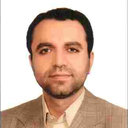Postprandial inflammation and endothelial dysfuction.
Raktažodžiai
Santrauka
Postprandial hyperlipidaemia is a common metabolic disturbance in atherosclerosis. During the postprandial phase, chylomicrons and their remnants can penetrate the intact endothelium and cause foam cell formation. These particles are highly atherogenic after modification. People in the Western world are non-fasting for most of the day, which consequently leads to a continuous challenge of the endothelium by atherogenic lipoproteins and their remnants. Furthermore, atherosclerosis is considered a low-grade chronic inflammatory disease. Many studies have shown that the process of atherogenesis in part starts with the interaction between the activated leucocytes and activated endothelium. Postprandial lipoproteins can activate leucocytes in the blood and up-regulate the expression of leucocyte adhesion molecules on the endothelium, facilitating adhesion and migration of inflammatory cells into the subendothelial space. Another inflammatory process associated with postprandial lipaemia is the activation of the complement system. Its central component C3 has been associated with obesity, coronary sclerosis, the metabolic syndrome and fasting and postprandial TAGs (triacylglycerols). Moreover, chylomicrons are the strongest stimulators of adipocyte C3 production via activation of the alternative complement cascade. A postprandial C3 increment has been shown in healthy subjects and in patients with CAD (coronary artery disease) and with FCHL (familial combined hyperlipidaemia). Postprandial lipaemia has been related to TAG and free fatty acid metabolism. All of these mechanisms provide an alternative explanation for the atherogenicity of the postprandial period.


